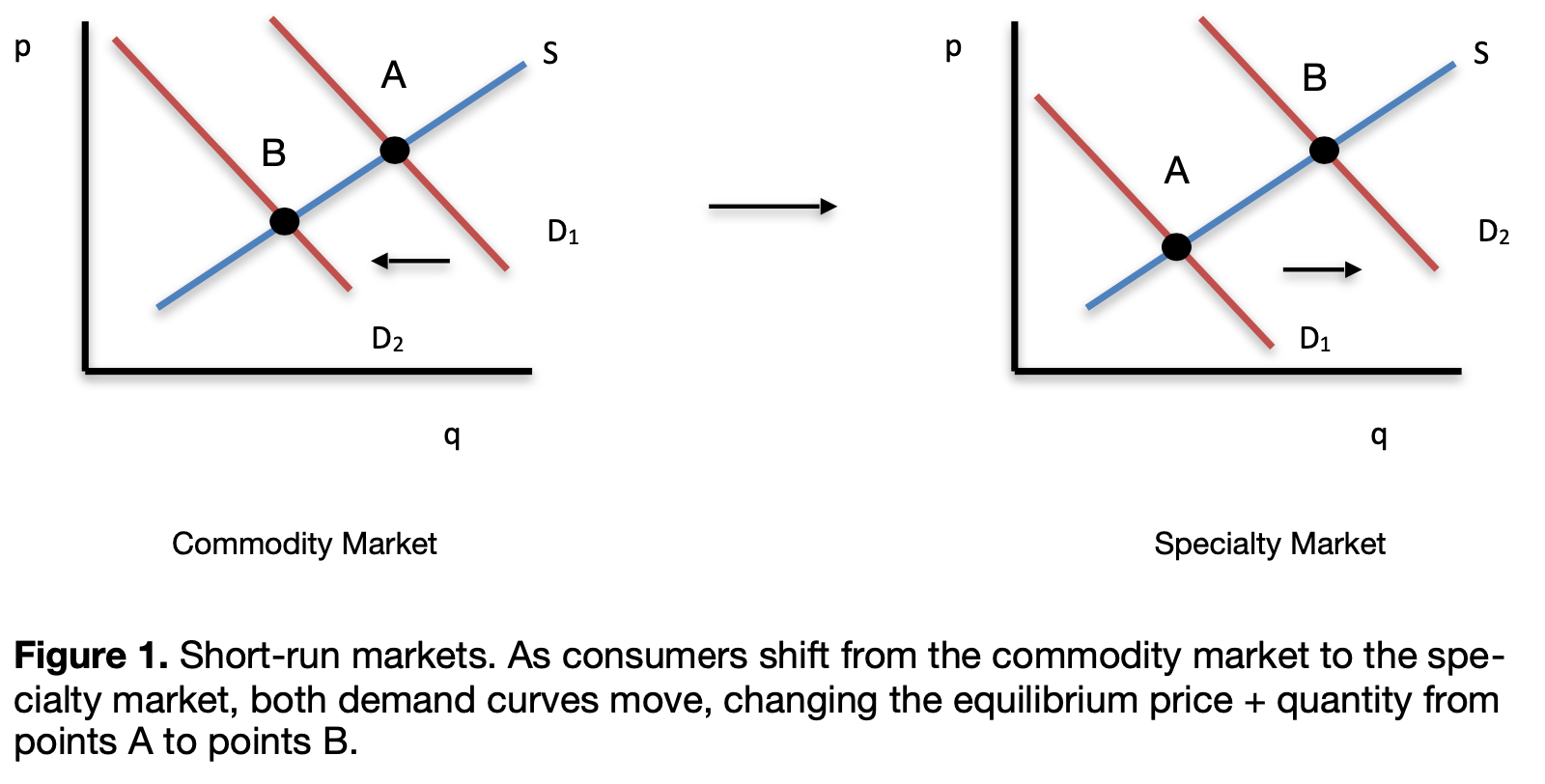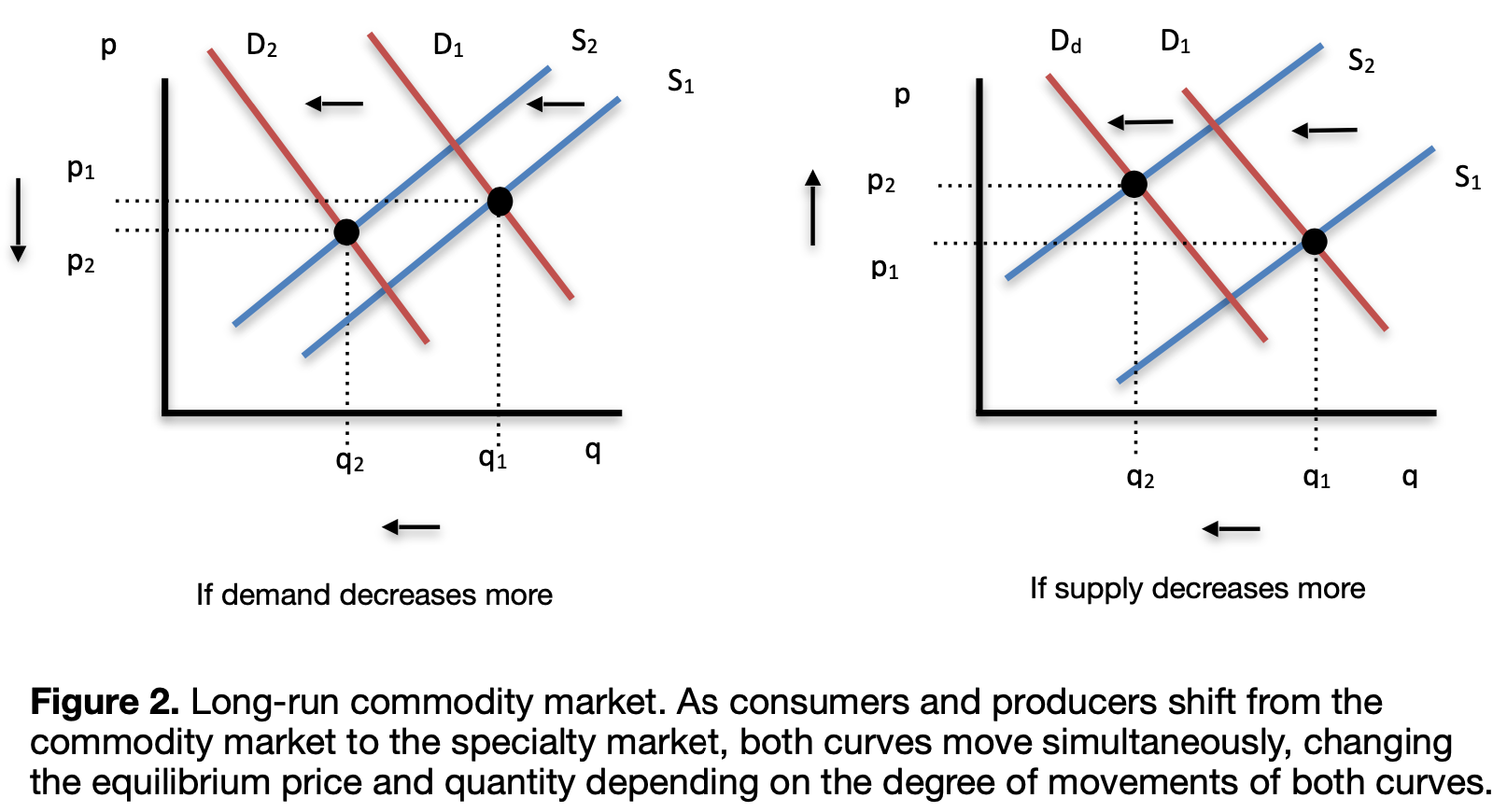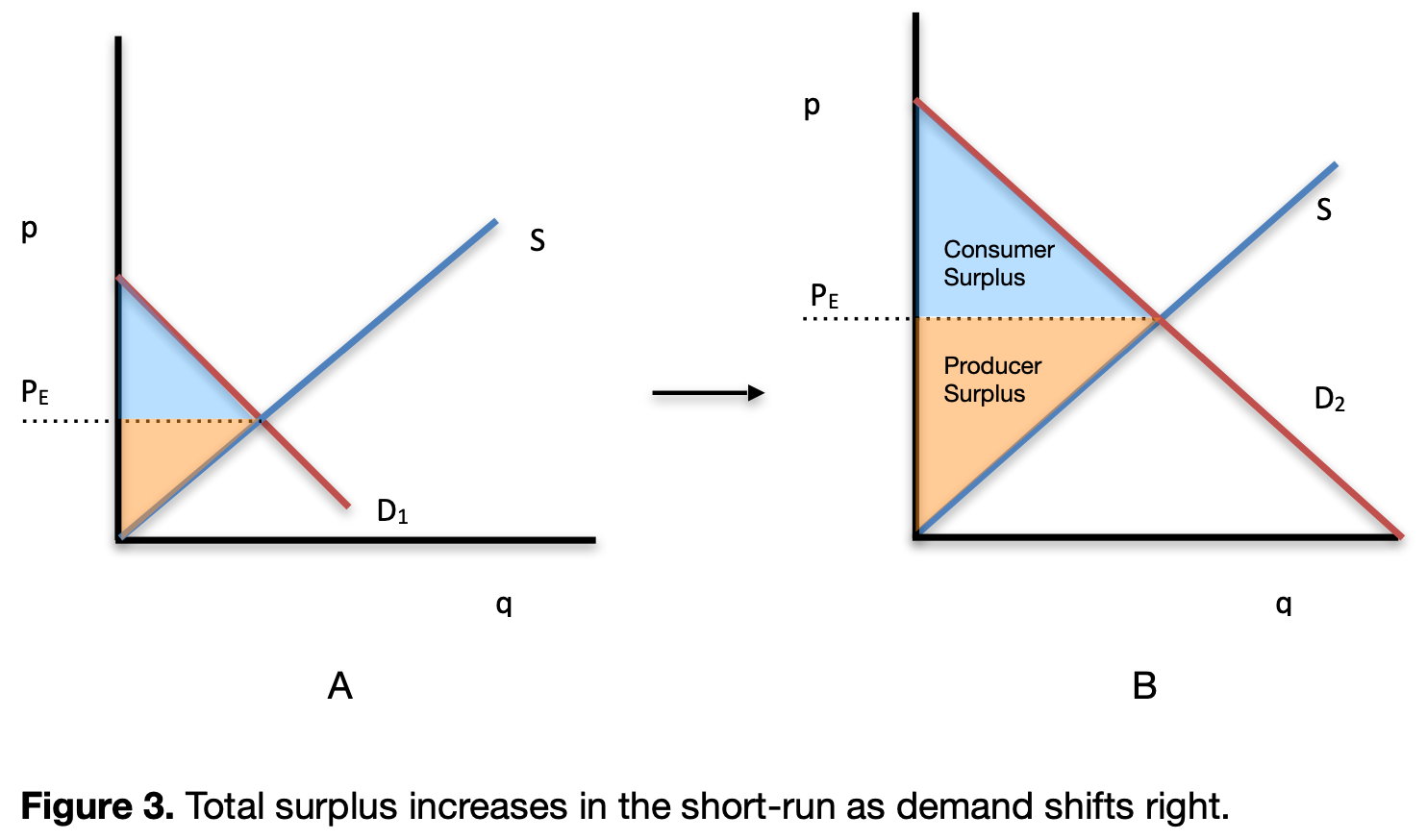This week I take a deeper dive into the economics of local consumption and how it might affect the local, specialty coffee industry. Graphs available at the episode homepage.
Notes
Below are the graphs used in the original article:
Contributions
- The trademarks OSCar skull logo (with and without background), podcast rockabilly skull logo: Gus Dark, Darkade
- Cursive writing logo, YouTube thumbnail templates: Evan Backstrom, The Rugged Press
- Backed Vibes Clean, by Kevin MacLeod, licensed with permission from Film Music - filmmusic.io.
Transcript
Michael:
This is the second episode in my mini-series on local consumption of coffee. Local consumption means the coffee never leaves the producing country.
This episode takes a deeper dive into economic theory than others. I use several terms from macro economics and apply them to the coffee industry. I do this in an effort to better understand the dynamics of local consumption. But fear not the concepts are relatively straightforward.
I also will discuss a couple of graphs in the episode. I provided links to them in the show notes, as well as copies in the episode homepage. The graphs are very basic and easy to understand. I’ve tried to adapt the article to suit the audio version so that the listener can get by without seeing the graphs.
However to see the graphs, check out the episode home page.
The original article was developed from a paper I wrote for an economics class, which was part of my horticulture degree.
Michael (2): The paper scored very well. That tells me that at least the economic concepts are applied appropriately and they support my hypothoses. That doesn’t mean that my hypotheses are correct as to why local markets took hold in Colombia and Brazil. So having said that let’s jump into the article titled "Local Consumption Wins In Brazil And Colombia," published December 20th, 2019.
This article was adapted from an assignment for an economics class I took in the fall of 2019 as part of a horticulture degree program. The assignment was to find an article about an agricultural or food market and answer the question "why did this market behave recently the way it did?" The market I chose was a specialty coffee market and the behavior was local markets in Brazil and Colombia competing with export markets for locally produced quality coffee. The original article I started with is titled Drinking Local from 25 Magaine, issue 10.
If I had to summarize the paper, I would say this increasing local consumption of coffee creates and expands markets. This gives everyone in that market, a bigger piece of the pie, especially the producers, who can use increased surpluses to improve their livelihoods, their production processes, et cetera.
Because my assignment paper was quite dry and at times too technical in economics, I’ve expanded on some of the specific terms and also made it more approachable. But it’s still about economics. Rader. Be warned.
Historically the best coffee produced by a country is exported for sales overseas in developed regions such as America, Europe, or Japan. However in Brazil and Colombia premium coffee is being sold locally at a higher price than for which it could be exported. Why then is local coffee so expensive in Brazil and Columbia?
The commodity market closely resembles a perfectly competitive market. Nearly everyone is a price-taker. The market has well-defined product standards. It has many buyers and sellers. Productive resources are mobile and buyers and sellers are well-informed.
The specialty coffee market is a sub-market of the commodity market. Broadly speaking, the price for specialty coffee is based on the market price of commodity coffee, with an added premium for quality, which is negotiated between buyer and seller. Specialty coffee is defined as coffee with few defects and a quality score of at least 80 out of 100 points.
Specialty coffee has traditionally been exported from producing countries, typically poor developing countries to developed countries.
This is because developed countries can afford the higher price of specialty coffee. This typically leaves only the lower quality coffee to be consumed within the producing country, while potential profits from higher grade quality of realized elsewhere.
Recently two producing countries have reached a point where high quality specialty coffee is sold by local producers for local consumption at a price higher than could be obtained for export.
Brazil and Columbia both have specialty coffee markets that have developed to the point where they are able to compete with export markets. What is driving this demand? And what does it look like from an economist point of view?
The Brazilian market.
A growing middle-class in Brazil means more disposable income, which means buying power, which means the ability to explore quality coffee. Enough people in Brazil are buying quality coffee that producers can get a higher price selling it locally, than if they were to export it.
The Brazilian retail coffee market is a mature well-established market that has been expanding in consumption around three to 4%. Because of this expansion, the local market has reached a point in which it is able to compete with export markets.
This trend is partly caused by an income effect; an expanding middle class. This increase in income has two effects. First, individuals are able to afford a switch to the specialty coffee market and explore quality coffee and the lifestyle that goes with it such as buying improved brewing equipment, taking coffee appreciation classes, et cetera.
The second way it impacts the market is by temporarily increasing both the equilibrium, quantity and equilibrium price. These are short run effects in which demand changes before there’s a change in the supply by producers. As demand for specialty coffee increases the price increases until enough producers take note of the higher prices and move into the market to get some of that action.
As consumers leave the commodity market. The short run effects of the decrease in buyers is a decrease in equilibrium price and equilibrium quantity. As buyers continue to leave the commodity market and the equilibrium price continues to decrease eventually producers will begin to exit the commodity market. Hopefully to enter the specialty market.
Once the market reaches a point where producers have had enough time to enter and exit a market, the long run effects will include a reduction in supply. And this is where it gets interesting for local consumption. I’ve been explaining how a local desire for quality coffee eventually draws producers out of export markets and into local markets. When less quality coffee is available for export, existing buyers shift to other sources, further-reducing demand.
Now, back to our model. When both supply and demand decrease the quantity available decreases. In the case of export markets, this means less quality coffees available for export. And more of the quality coffee remains in country. Quality coffee remaining in country can feed a virtuous cycle of pride in consuming delicious coffee produced locally, pride in having one’s product enjoyed locally. And increased wealth remaining local. In other words, it perpetuates cultural identity and in this way it really is something worth developing.
The Colombian market.
A successful marketing campaign by the coffee industry in Colombia has helped increase the number of consumers of local high quality coffee to the point where producers can get a higher price selling it locally than exporting it.
While, the cause of the increase in consumption is different from Brazil, the effects are exactly the same; a shift from commodity export markets to local specialty markets.
Increased coffee prices in Columbia have a different cause with a similar effect. In Columbia, the well-organized coffee industry started a marketing campaign called Toma Café, which encouraged consumption of locally produced coffee by exploring diverse coffee, drink recipes. And also by encouraging coffee consumption anytime of the day, not just in the morning. This campaign had the effect of increasing the population of potential buyers of locally produced high quality coffee. Like the income effect on the Brazilian market, this shifts the demand curve to the right. This increases the equilibrium, quantity and equilibrium price.
The Toma Café program increased the volume of coffee consumed by reported 36% in seven years. This increase in consumption was stimulated by a campaign set to increase the promotion, education, research, and innovation in local coffee.
Much like the taste-makers function. The Toma cafe program taught consumers what good coffee is. And more importantly, what good locally produced coffee is. And they included the producers in shaping the message.
New short run markets take hold.
There are two functions of price that are at play in both Brazil and Columbia. First is the rationing function, which distributes scarce goods to those consumers who value them most highly. Those with the highest willingness to pay. In the case of specialty coffee in Brazil and Columbia this means that local consumers who value premium coffee and are willing and able to pay higher prices, get it before it goes to the export market. This both increases the size of the local market and decreases the size of the export market.
The second function of price is an allocative function, which directs resources away from overcrowded markets towards markets that are underserved. In Brazil and Colombia, the overcrowded market is the export market for commodity coffee. And the underserved market is the local market for specialty coffee.
Because of the allocative function, producers are incentivized to exit the commodity market. And are more incentivized to enter the specialty market. The allocative function is what will hopefully keep coffee producers in the coffee industry by encouraging them to participate more in the premium or specialty market and reduce their exposure to the more volatile commodity prices.
Everyone gets a bigger piece of the pie.
For this section, I discuss an economic model called total surplus. Total surplus is the sum of consumer and producer surpluses. This model can help explain individual as well as aggregate surplus. I will be referring to aggregate surplus.
Consumer surplus is the difference between how much one is willing to pay and how much one actually pays for something. In other words, savings. Producer surplus is a difference between the price producers are willing to sell for. And the price they actually get.
In both cases, the difference or surplus is money that can be spent elsewhere. When short run demand increases significantly. Total surplus does too, creating a more profitable environment.
Markets are developing in Brazil and Columbia to satisfy those buyers who value, quality and are willing and able to pay for it. As demand for local high quality coffee increases, price increases and more producers are drawn into the market to exploit the opportunity presented by the higher prices. This expands the total market by drawing in more of both producers and consumers.
Total surplus is a sum of consumer surplus and producer surplus. It represents a tug of war between buyers and sellers, as well as sellers versus sellers around price.
A higher price means more surplus for sellers and a lower price means more surplus for buyers. As more buyers demand, higher priced quality coffee, that leaves more opportunity for buyers of cheaper, quality coffee to enter the market. Higher prices also incentivize more producers to enter the market. This increases total surplus.
As total surplus expands, more producers have surplus with which to expand and improve their production. And even to participate further in the local market. Consumer surplus means money saved that they were otherwise willing to spend on coffee, but can now spend elsewhere, which represents a social benefit. Expanding total surplus gives everyone a bigger piece of the pie.
In both Brazil and Columbia, we are witnessing a short run market in which the demand curve is shifting to the right and equilibrium price and quantity, and total surplus are all increasing. Eventually in the long run, more producers will be incentivized by higher prices to join the local specialty market.
Producers entering the market, increase, supply and shift the supply curve to the right. Eventually enough producers will enter the market that the increased supply will drive down the equilibrium price but in the short run there’s a profit to be exploited.
In conclusion local specialty coffee markets are developing in countries like Brazil and Columbia, and these markets are making it more expensive to export specialty coffee, than to sell it in the local market. This is a significant change in consumption patterns.
The underlying causes for the increase in local consumption vary. In brazil the cause is largely due to increasing purchasing power from increased incomes of the middle class. In columbia the causes largely due to an increase in potential buyers from increased marketing efforts.
For both countries however the short run effect is the same: an increase in equilibrium price and quantity and an increase in total surplus due to a shift in the demand curve. Eventually more producers will enter the market to take advantage of the higher prices. And the long run effects of increased supply will eventually be lower prices. This tug of war between supply and demand will lead to an expanding local market that will help to keep more producers and profits in country thus increasing everyone’s wealth.
That was me Michael Wright reading my article titled "Local Consumption Wins In Brazil and Colombia," originally published December 20th, 2019. Thank you for listening



